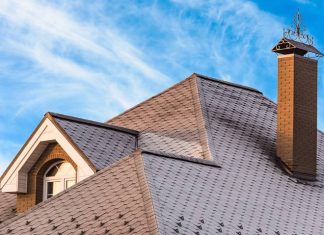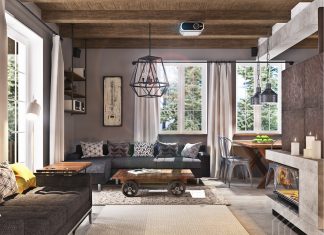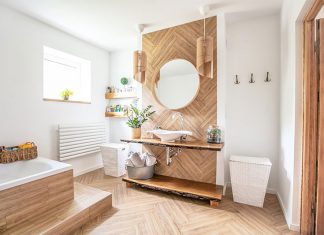According to a WHO report in 2020, household air pollution contributes to around 3.2 million deaths annually, including children under five years old. Preventing this from happening requires you to add proper ventilation to control the entire household from getting allergies and non-communicable diseases. Read on and get to know the most effective ventilation system.
5 Different Ventilation Types
There are several types of ventilation that you can use to ensure that there is enough air circulating in the house to maintain the indoor air’s freshness. Here’s a quick overview of the different ventilation types.
Natural Ventilation
In natural ventilation, fresh air enters your home, pushing the warm and polluted air out of the building through the door, window, or roof openings. Natural ventilation has two types, cross ventilation and buoyancy-driven ventilation, which both bring in and out the air.
Cross Ventilation
In cross-ventilation or wind-based ventilation, you need to strategically install windows and doors of different sizes to utilize the windward and leeward sides of the building. Putting these openings in the right location allows the air to move swiftly in a specific direction.
However, this type of ventilation is not advisable if the windward side of the building highly produces air pollution. The areas can also be drafty and too cold for some people, especially during winter.
Buoyancy-Driven Ventilation
The Buoyancy-Driven Ventilation, the stack effect, uses the principle of thermal buoyancy, where the colder air pushes the warmer air out of the building through the ceiling.
If you prefer to use this type of natural ventilation, you must consider the difference between the cold and warm air temperatures and the height difference between the cold and warm air openings. Note that the ventilation rate depends on these; the more significant the height differential, the higher the ventilation rate can become.
Also, you may consider insulated wall access doors that protect the structure’s interior components and the building’s occupants from harmful air leakage that can significantly affect their health. On a side note, several variations of insulated wall access doors are fire-rated, allowing you to buy time to escape during fire emergencies.
Balanced Ventilation
If you are looking for adequate ventilation for your home that can work all year round regardless of the climate, choose balanced ventilation. You can usually see this type of ventilation in living rooms and bedrooms, which always need fresh air, and in indoor kitchens and bathrooms where moisture and grease are present. Though they are expensive, the ventilation’s two fans and two ducts are highly efficient in bringing in fresh air and exhausting the polluted atmosphere.
Energy Recovery Ventilation
The heat recoveries can recover around 60-90% of the air, which will pass through the air conditioning system for pre-heating or pre-cooling processes. For example, during winter, it is common for the system transfers the heat from the exhaust to the incoming outdoor air supply. In summer, it will have a reverse effect. The system will convert the incoming warm air into cool air.
These two systems have almost the same functions and only differ in how the heat exchanger works. In ERVs, its heat exchanger transfers heat energy and water vapor, while in HRV setup, the heat exchanger only transfers heat energy.
Exhaust-Only Mechanical Ventilation
The exhaust-only mechanical ventilation consists of multiple fans strategically located to room-generating pollutants. Although the ventilation’s simple design works perfectly in bathrooms and kitchens, it is only advisable to use it during colder weather as it depressurizes the area.
Depressurizing a structure during summer will only draw moist air to the building putting it at risk of moisture damage unless there are passive vents installed where exhaust-only mechanical ventilation is present.
Supply-Only Ventilation
Unlike exhaust-only mechanical ventilation, supply-only works in mixed climates and allows better air control. The system consists of a fan and a duct system that pressurizes the entire room where it was strategically installed and brings in clean and healthy air while pushing away the stale air from the structure through air-leakage sites keeping polluted air from entering the house. However, this type of ventilation may also cause mold formation, especially during the winter, as warm air escapes through the exterior wall and ceiling openings.
Ready to Install a Ventilation System for Your Home?
Home ventilation is vital to maintain the house’s air quality, and the five highly efficient house ventilation systems can keep the clean and fresh indoor air quality. Also, these ventilation systems can help lower your energy bill over time. However, you must ensure that whichever vent system you install must be clean and well-maintained to prevent any damages that may affect the vents’ efficiency.















